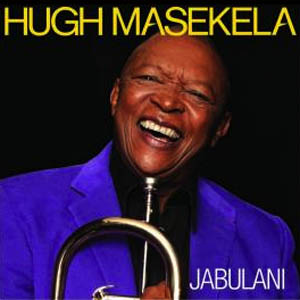
JOHANNESBURG, SOUTH AFRICA: Grammy-nominated South African trumpeter, composer, and singer Hugh Masekela has been making chart-topping records since debuting with 1964’s aptly named, The Emancipation of Hugh Masekela. The famous anti-Apartheid activist recently recorded his upcoming album, Jabulani (number twenty-eight for those who are keeping score!) for South African colossus Gallo Records at the Digital Cupboard studios in Johannesburg. Jabulani, means “happiness” or “to celebrate” in Zulu, and this new album imprints Masekela’s trademark magic on traditional South African wedding songs. The album’s tracking coincided with the 2010 FIFA World Cup in South Africa, which gave the process an air of celebration appropriate to its theme and yet complicated its logistics (Masekela was asked to perform in the opening ceremony and many other World Cup-related events). While a variety of mics were used to track the full band, Digital Cupboard owner and engineer Ian Osrin relied on a new BOCK 151 to capture the (sonically-challenging) charm of Masekela’s gravelly voice with nuance and musicality. Aki Khan at Eastern Acoustics Pro Audio was instrumental in selling the microphone to the studio.
“Having the World Cup here certainly added a sense of excitement to the whole recording process,” reported Osrin. “The album is based on archival material of what are known locally as ‘wedding songs’ – although they are sung at all festive occasions. We tracked drums, bass, keyboards and guitar at the same time. That laid the groundwork for Hugh’s vocals and horns, which we recorded whenever we could steal him away from the games and other obligations.” Notably, Masekela collaborated with his American-born son, Sal Masekela, host of ESPN’s X Games, in a series of miniature documentaries that were aired on ESPN during the FIFA World Cup coverage. The two men tour South Africa, exploring both the beauty and heartbreak of its past and the promise of its future.
The Digital Cupboard has held a landmark position in the world of South African studios since opening its doors in 1988. Some six-hundred albums of African pop, gospel, and world music owe their existence to the expertise of Osrin and his evolving procession of gear, which now centers on Nuendo, using RME RayDat cards and a Yamaha DM 1000 console. But Osrin contends the real magic of the Digital Cupboard is its vibe, which has not only claimed innumerable man-hours to set up and refine, but also a seep of cash that Osrin claims rivals what has been spent on the gear itself!
Osrin used a Great River preamp, a BOCK 151, and little else to record Masekela’s famous voice, which figures more prominently than his horn blowing on the new album. The large-diaphragm, cardioid 151 is based on the flagship BOCK 251 microphone and closely delivers the same inexpressible capture at only two-thirds the cost. The 151 features a BOCK handmade German capsule and outboard power supply, with a hand-wound transformer and a NOS tube. A unique “bright/normal” switch gives it a flexible sound that is more coherent and authentic-sounding than applying an EQ band-aid after the fact. On this recording, Osrin downplayed the higher registers in Masekela’s voice by using 151’s normal mode position.
“Hugh has a particularly difficult voice to record,” said Osrin. “It has a gravelly, rough timbre, but the BOCK 151 took to it like it had been designed for him. The 151 has a lovely, flat response and seems to smooth the ‘gravel’ without making his voice sound thin or too muddy. It’s subjective, but to my ears Hugh’s voice sounds natural and present but not falsely bright. In my experience, a lot of large-diaphragm vocal mics have a thin band of distortion around the 3 kHz range, which seems to present itself as a grating noise. The BOCK doesn’t exhibit that nasty characteristic and remains smooth throughout the vocal range.”
Osrin rounded out the production with a DPA 4041 on Masekela’s horn. “A small anecdote,” added Osrin, “Hugh actually plays a Flugelhorn. But during the recording, he kept referring to it as a ‘trumpet.’ Being a bit of a stickler for detail, I asked him when he was going to finally record a proper ‘trumpet.’ We laughed and agreed to proceed with the generic label ‘horn.’ Hugh is such a great guy. He has such an incredible energy. Even at 71, he was always the first one at the session and the last one to leave. During the recording, he was frequently off doing concerts on both sides of the Atlantic, in addition to all of the World Cup-related performances and interviews. Despite all that potential distraction, he was always dedicated and professional in the studio, accurate without being anal. It was a stunning experience to work with someone of his stature who retained the ability to be cool in the studio.”